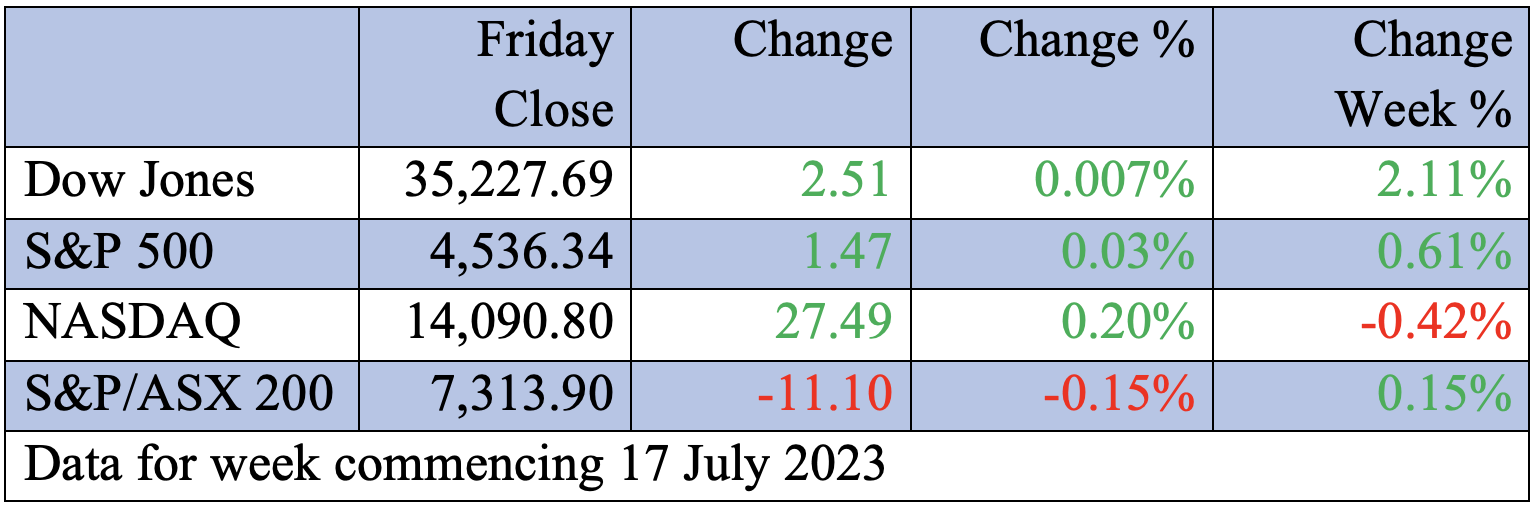
The Dow Jones Industrial Average fought for a 10-day in a row rise, which are the best consecutive up-days for the index since 2017! This coincided with the Nasdaq dropping over 2%, as initial jobless claims in the US fell to a two-month low, which sparked some to argue that this will push the Fed to give another rate rise this upcoming week, which hurt tech stocks.
Of course, the real reason was the disappointing market reaction to Tesla’s and Netflix’s earnings reports. Reuters’ report was more on the money and this is what it told us: “Tesla shares tumbled 9.74%, its biggest one-day percentage drop since April 20, after the electric-vehicle maker reported a drop in its second-quarter gross margins to a four-year low and CEO Elon Musk hinted at more price cuts.”
Meanwhile, this is what Reuters said about Netflix: “Netflix slumped 8.41% to suffer its biggest one-day percentage decline since December 15, after the streaming video company’s quarterly revenue fell short of estimates.”
As a consequence, many market players are wondering if they should reassess their commitment to the big Magnificent Seven stocks (Apple, Microsoft, Alphabet, Amazon, Nvidia, Tesla and Meta Platforms) that have been driving the Nasdaq and the S&P 500 higher over the past year.
You might recall I always argued that eventually once the top seven stocks start to lose momentum, after rising over 65% in a year, there would be a rotation into other formerly ignored stocks that would drive the Dow, the S&P 500 and even the Nasdaq higher. This is already showing with the less-tech heavy Dow up 10 days in a row, but this most famous of market indicators is only up 6.6% for the year-to-date. In contrast the Nasdaq is up 35.6%, while the S&P 500 has put on close to 19%.
When interest rate rises are over and the current US earnings season concludes, leaving a message that Wall Street profits are better than tipped, then there will be a lot of browsers looking at companies that were smashed when the Fed started hiking rates in 2022. These once-ignored companies will drive up the Dow and S&P 500 and represent a much broader market recovery.
For the Nasdaq, this index is going to be reweighted on July 24 to reduce the impact of the Magnificent Seven, which means that this index will need the other companies within it to start pulling their weight. It could hurt the Nasdaq in the short term, but it’s bound to take-off again once rate rises stop.
This puts an even more special focus on the Fed’s rate decision next week. Right now, the market agrees with former Federal Reserve Chairman Ben Bernanke, who on Thursday said “…it was clear that the Fed will raise interest rates next week but after that the outlook is cloudier.” (marketwatch.com)
Provided inflation continues to trend down (the last reading of the CPI in the US was a 0.2% rise in June, which took the annual reading to a lower-than-expected 3%), then next week’s expected rise should be the last.
And given earnings look better than anticipated, this should help set up the stock market for a nice rebound in the December quarter that rolls into 2024. On earnings, this is what CNBC reported overnight: “Seventy-five percent of S&P 500 companies that have already reported exceeded analysts’ expectations, according to FactSet data. However, that beat rate is below a three-year average of 80%, according to The Earnings Scout.”
That might be true but the past three years have been wacky years with pandemic crashes, unbelievable market rebounds, historically aggressive rate rises and huge tech company stock price surges all making the period hard to use as a comparative benchmark.
At this stage, only a silly Fed, who raises more than one more time, could ruin the improving picture for investing, with inflation falling and the chances of a worrying US recession reducing as week after week of data drops paint a more positive picture for the share market. We always hoped for a soft landing for the US economy, but few dared to strongly believe it, with the Fed’s rate rises looking so aggressive. However, right now, it does look like a good chance of happening. As I said earlier, only a silly Fed could ruin this potentially positive picture.
To the local story and tech had a rough Friday, driven by the short-term concerns in the US because of the initial jobs claim number that made some ‘experts’ speculate that another Fed rate rise was more likely. The S&P/ASX 200 Index was actually up 0.15% for the week and ended at 7313.90, but it has been virtually going sideways since April.
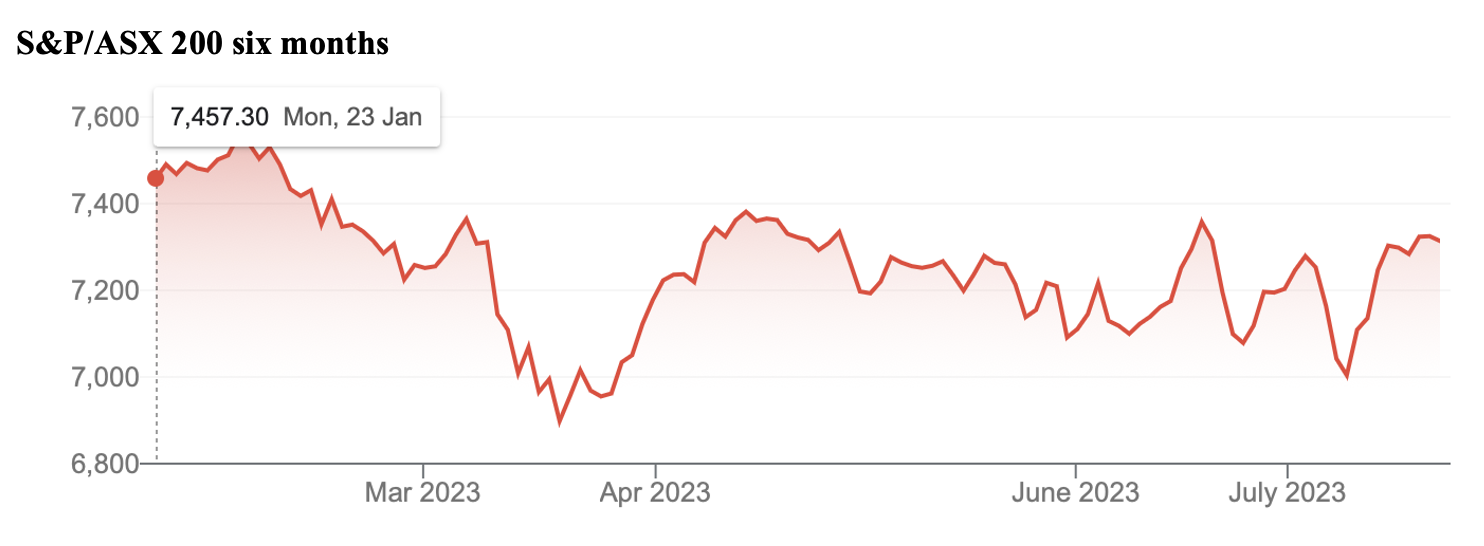
As the AFR pointed out: “The local technology sector subsequently dropped 2.7 per cent on Friday; Xero tumbled 3.9 per cent to $122.20, TechnologyOne fell 2.9 per cent to $15.33 and Life360 declined 2.9 per cent to $7.62.” But many of these stocks have had a terrific run of late. For example, Xero is up 65% for the past six months.
Here are the big winners and losers for the week:
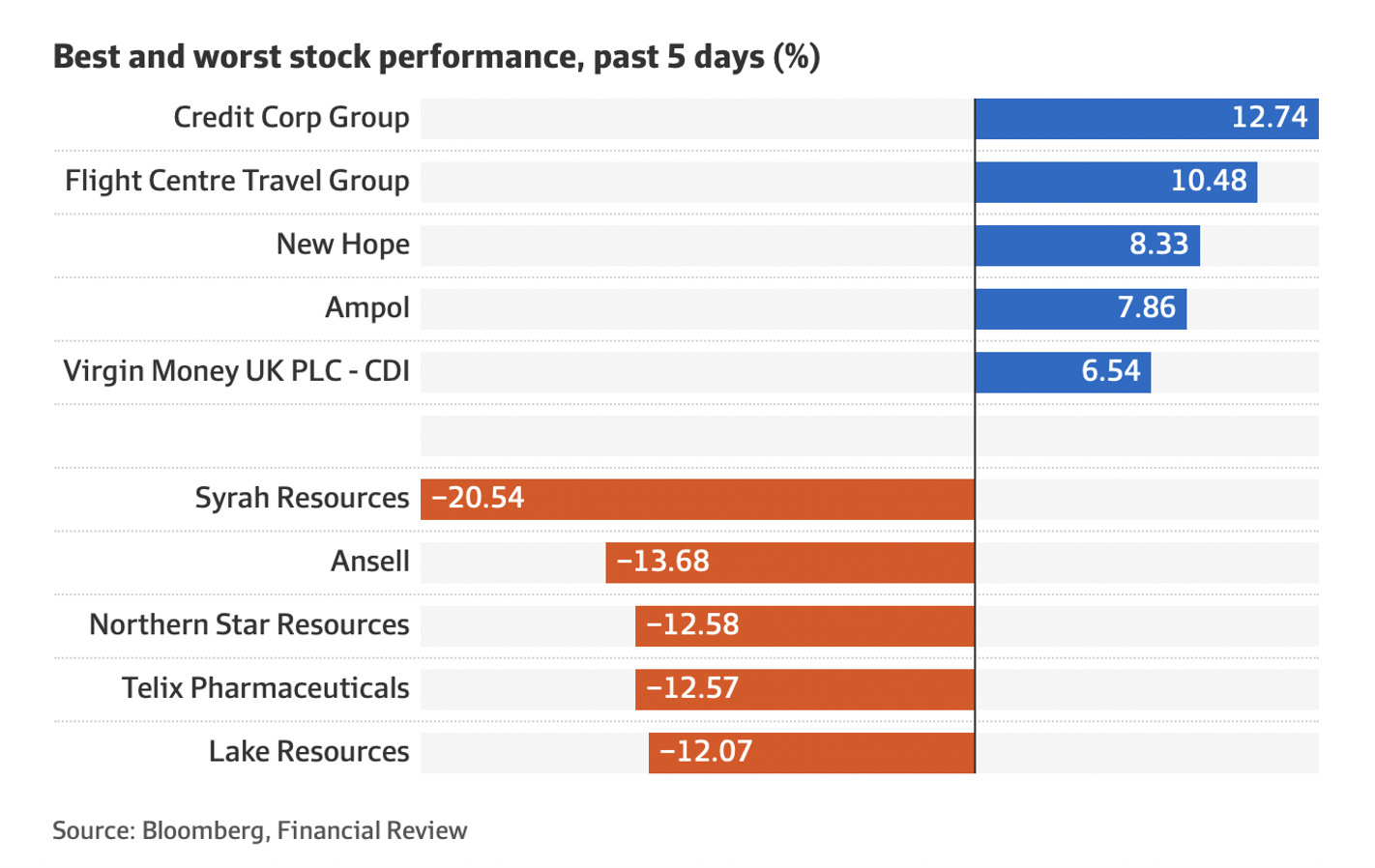
The big miners didn’t have a great week and the underwhelming China growth story didn’t help. BHP lost 1.1% for the week to finish at $45.02, while Rio gave up 1.88% to end at $116.78. Against that, AGL gained 5.26% to now be $12 with rising power prices and a number of fund managers, such as Firetrail, now backing the company’s outlook.
And it was a good week for banks, with NAB the star up 3.64% to $27.90, while ANZ put on 2.95% to $25.16 and Westpac added 2.42% to $21.98. The CBA was up 2.9% to $104.55.
What I liked
- The Westpac/Melbourne Institute Leading Index ticked up slightly in Junebut still points to a sharp downturn in economic growth, which supports my case that the RBA has done enough. We got a good jobs report this week but unemployment is a lagging indicator and can be misleading.
- This CBA call: “Our base case remains one final rate hike at the August Board meeting, taking the cash rate to 4.35%.” (I think the RBA has done enough but one more rise versus two or three hikes as some economists have is preferrable.)
3. This from AMP’s Shane Oliver: “The past week saw more countries report falls in inflation, following the fall in inflation to 3% year-on-year in the US. This is all adding to evidence that global inflationary pressures are in retreat.” - US retail sales in June were softer than expected but underlying growth was a bit better, albeit annual growth in real and nominal terms was modest.(The Yanks need a slower economy to make sure inflation heads down further from the current 3% level.)
- US reporting season is better than expected: 16% of S&P 500 companies have reported so far, with 77% beating expectations (compared to the norm of 76%) with an average beat of 11%. “Consensus earnings expectations for a 7% decline in earnings over the year to the June quarter are likely to beaten by a wide margin,” Shane Oliver predicts. This is good for future stock prices.
What I didn’t like
- Unemployment at 3.5% and 32,600 new jobs isn’t good for stopping rate rises!
- The RBA minutes indicate the decision to leave the cash rate on hold in July was another close call.
- The Conference Board’s US Leading Index fell further in June,continuing to point to a high risk of recession, which I don’t want to see. The market view is any recession will be mild and won’t show up until possibly late 2024. (This index is not excessively reliable)
- China’s GDP growth slowed to 0.8% quarter-on-quarter, with annual growth coming in weaker than expected at 6.3% year-on-year, when the consensus was expecting a 7.1% rise from the lockdown depressed activity a year ago.
The big market issues for next week
While the Fed’s interest rate decision will dominate market action, it’s also a big five days of US company reporting, while our reporting season kicks off. In the US, these companies are on show: Alphabet; General Motors; Microsoft; Verizon; Visa (Tuesday); Boeing; Coca-Cola; Meta Platforms (Wednesday); Amazon; Ford Motor; Intel; Mastercard; McDonald’s (Thursday); and Chevron; Exxon Mobil and Procter & Gamble (Friday).
Locally, we see: earnings from Rio Tinto (Wednesday); Unibail-Rodamco-Westfield; Sandfire Resources; and Champion Iron (Thursday). Then there’s ALS (Wednesday). Meanwhile, Australian Agriculture Co.; Macquarie Group; and Smartpay (Thursday) host annual general meetings.
And our CPI on Wednesday makes for a week when we could see huge market action.
The Week in Review
Switzer TV
- Switzer Investing: Here are 8 stocks the analysts tip have 20% upside. We road test them.
- Boom Doom Zoom: 20th July 2023
Switzer Report
- 8 stocks with 20% plus gains ahead
- Lovisa Holdings and Nick Scali worth putting on your watchlist.
- “HOT” stock: Megaport (MP1)
- Questions of the Week
- Abacus Storage King (ASK) to launch on ASX in August
- HOT stock: (BHP)
- 3 up and coming education stocks
- Buy, Hold, Sell — What the Brokers Say
Switzer Daily
- Our great jobs news could mean another rate hike is coming!
- Will the RBA ignore rising insolvencies and keep raising rates?
- How does Dan Andrews get away with cancelling the Commonwealth Games?
- When bagging politicians, how low could Dr Lowe go?
- The real world might be telling the new RBA boss to stop raising rates
Top Stocks — how they fared.
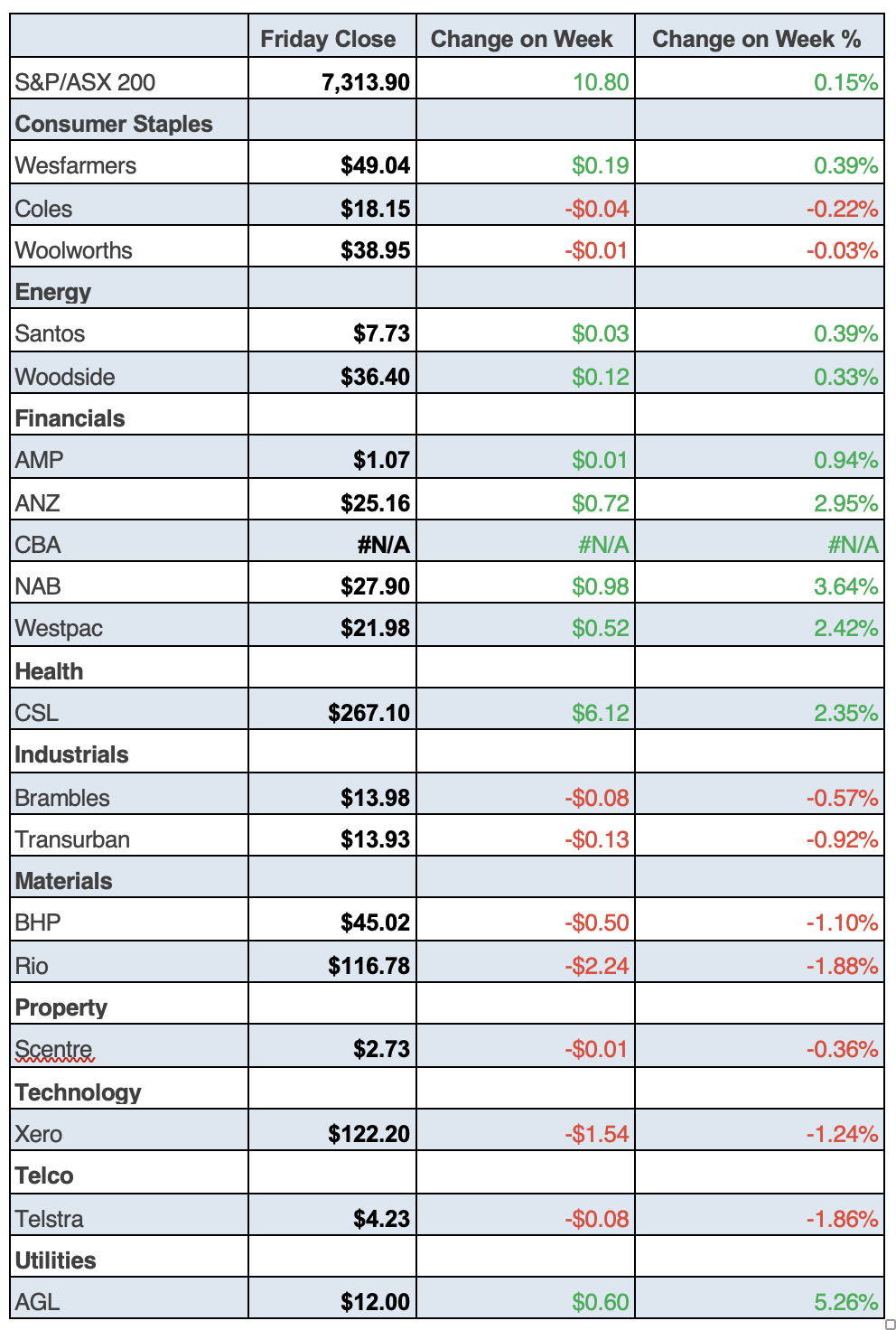
The Week Ahead
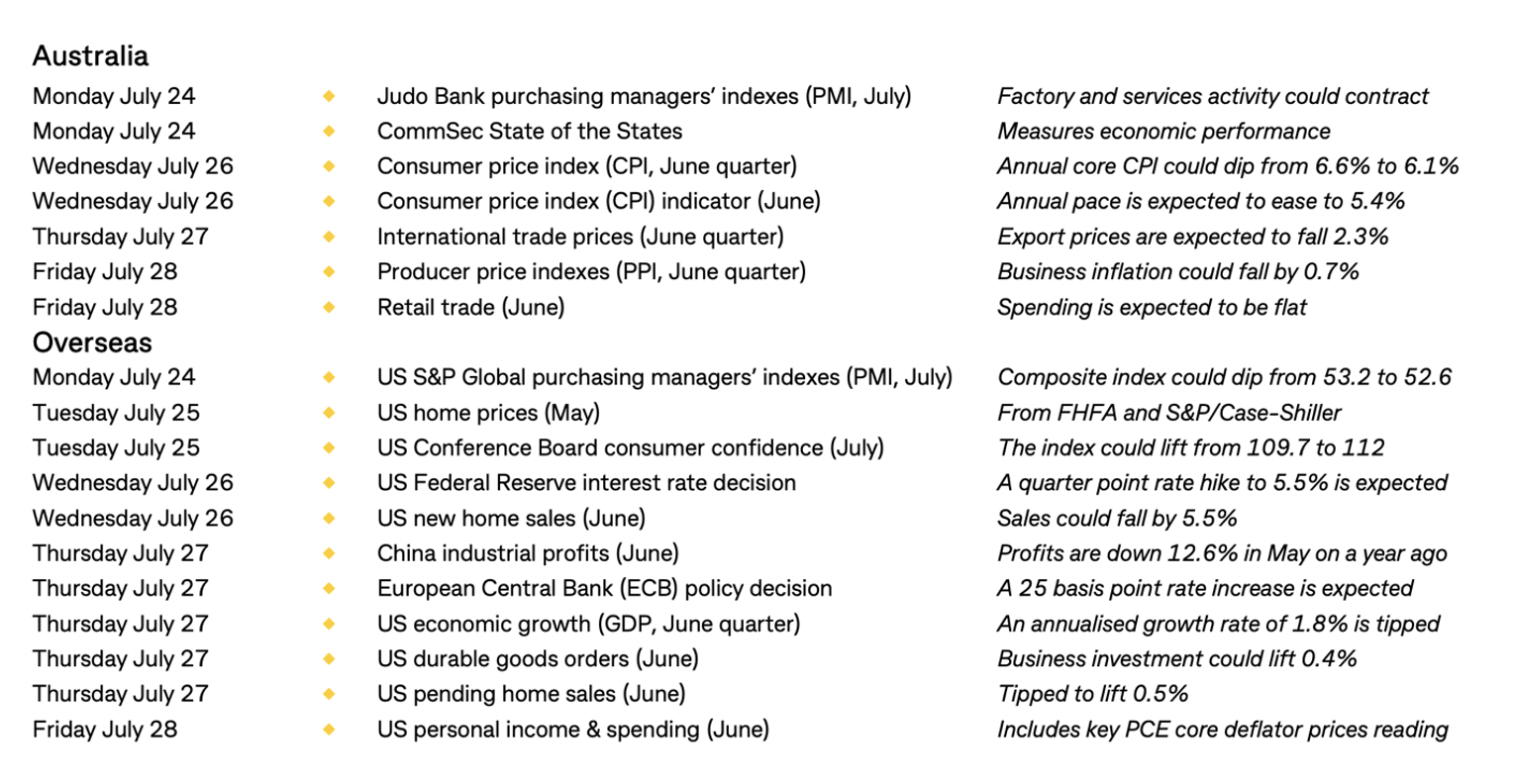
Chart of the Week
Two charts instead of one are worth thinking about.
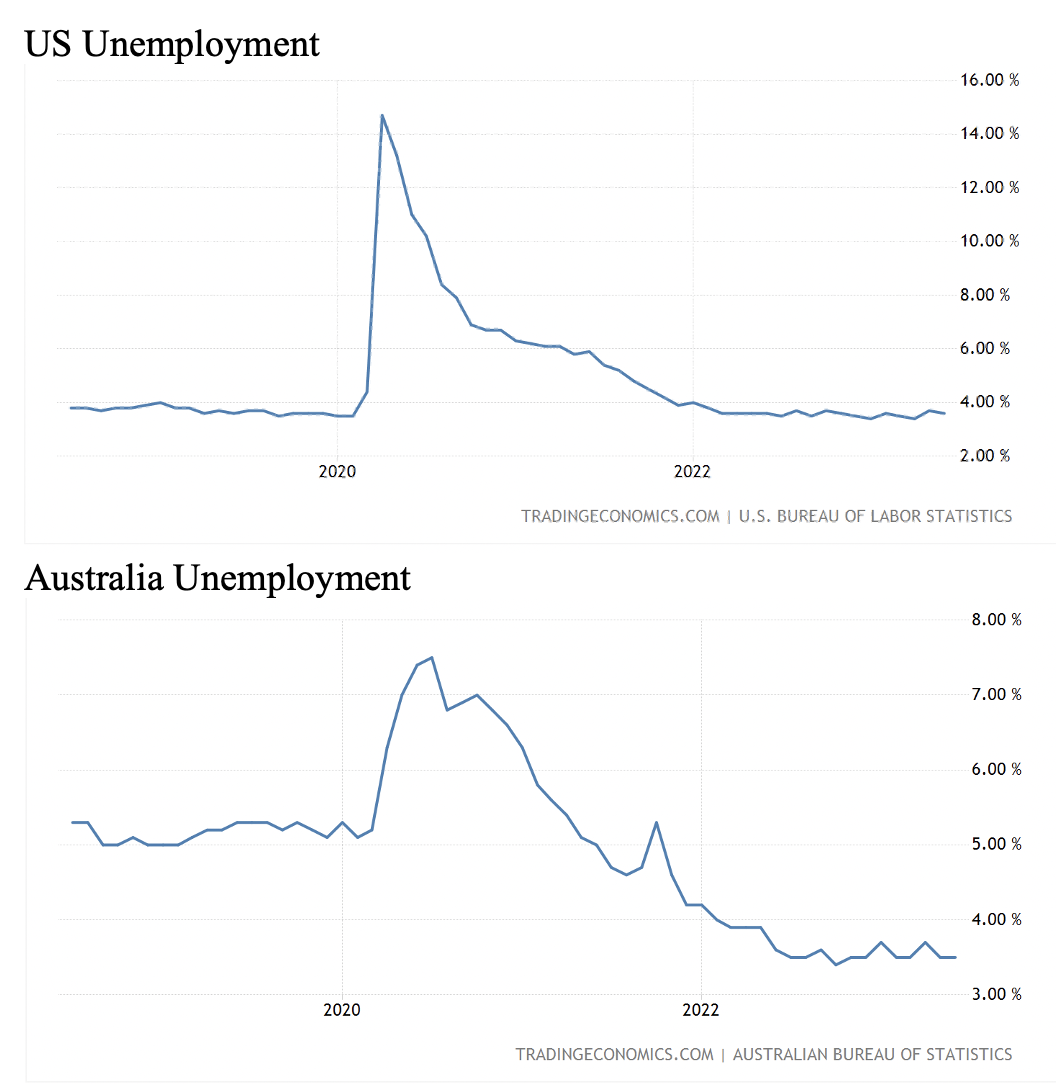
Notice that the US has not seen a big spike in unemployment yet inflation has fallen to 3%!
That’s economically unusual, so let’s hope that plays out here on Wednesday when the June quarter CPI is released.
Stocks Shorted
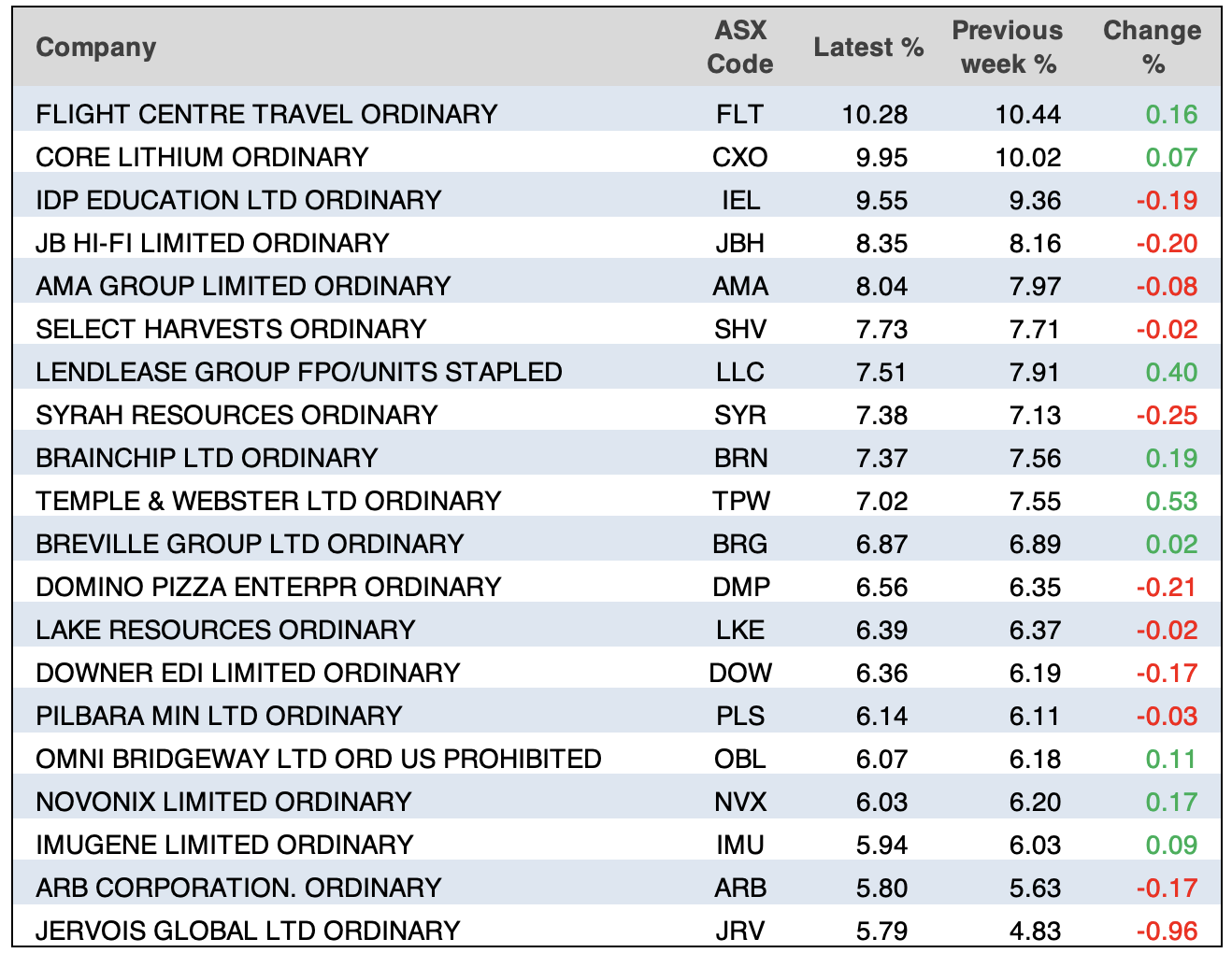
ASIC releases data daily on the major short positions in the market. These are the stocks with the highest proportion of their ordinary shares that have been sold short, which could suggest investors are expecting the price to come down. The table shows how this has changed compared to the week before
Quote of the Week
“Although the number of bear market prognosticators has certainly thinned out given the market’s impressive run, there remains a diehard contingent that have viewed recent trends as nothing more than a bear market rally,” BMO Capital Markets analyst Brian Belski said in a note from the firm. “Unfortunately for this crowd, history does not appear to be on their side.”
Disclaimer
Important: This content has been prepared without taking account of the objectives, financial situation or needs of any particular individual. It does not constitute formal advice. Consider the appropriateness of the information in regard to your circumstances.

